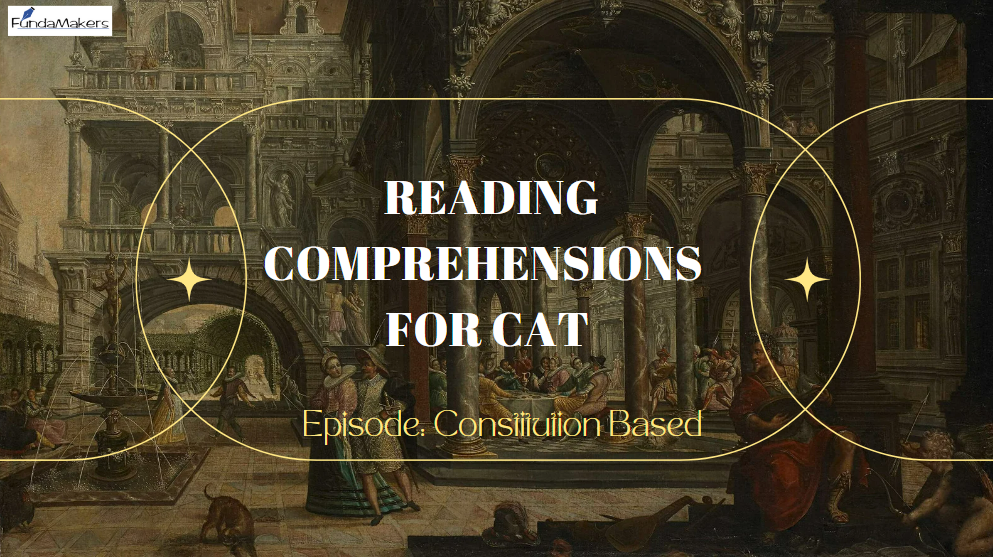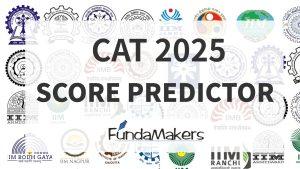Constitution-based reading comprehensions are crucial for CAT preparation due to their intricate nature, requiring a deep understanding of complex texts and the ability to analyze and interpret dense information. The CAT exam, known for its challenging verbal ability and reading comprehension sections, often includes passages that test a candidate’s ability to grasp legal, political, and historical contexts. These passages help develop critical thinking, attention to detail, and the ability to draw inferences from nuanced material, all of which are essential skills for excelling in the exam. Moreover, constitution-based readings provide exposure to a formal and precise use of language, which is invaluable for mastering the verbal section of the CAT. Thus, engaging with these comprehensions enhances overall reading proficiency, preparing aspirants for the rigors of the test.
So let’s have a look at few most read comprehensions:
Passage 1.
The delegates at the Constitutional Convention were pragmatic. They recognized that the most significant challenges would arise after the convention, once the Constitution was drafted and signed. The delegates had exceeded their authority. Instead of revising the Articles of Confederation, which had governed the American states until then, they proposed a completely new government. Given this situation, the convention was understandably hesitant to present its work to Congress for approval.
Instead, the delegates chose a radical approach. They decided that ratification by nine states would be enough to establish the new government. Essentially, the Constitution was to be approved directly by the people, bypassing Congress entirely, despite Congress having called the convention.
The convention leaders cleverly aimed to avoid the state legislatures, which were devoted to states’ rights and often required the agreement of two legislative houses. For a swift ratification process, the single-house, specially elected state ratifying conventions were seen as the most promising route to secure agreement.
Questions:
- What was the primary concern of the delegates at the Constitutional Convention after drafting the Constitution?
- A. Winning battles during the convention
- B. Gaining Congress’s approval
- C. Ensuring ratification by the states
- D. Amending the Articles of Confederation
- Correct Answer: C
- How did the delegates of the Constitutional Convention exceed their authority?
- A. By proposing amendments to the Articles of Confederation
- B. By drafting and signing a new government structure
- C. By seeking Congress’s approval
- D. By submitting their work to the state legislatures
- Correct Answer: B
- Why did the delegates decide to bypass Congress in the ratification process?
- A. To gain faster approval from the state legislatures
- B. To avoid potential rejection by Congress
- C. Because Congress had already approved their work
- D. Because Congress suggested this approach
- Correct Answer: B
- Why were specially elected state ratifying conventions favored for the ratification of the Constitution?
- A. They were more loyal to the Articles of Confederation
- B. They required the approval of both legislative houses
- C. They were dedicated to states’ rights
- D. They provided a quicker and more likely path to agreement
- Correct Answer: D
Passage 2
The 1949 Indian Constitution, containing 395 articles, is the longest of all national constitutions. In contrast, newer constitutions like those of Japan and Indonesia are much shorter. Some constitutions are supported by robust institutions such as an independent judiciary, while others, despite their high ideals, lack the institutional backing to enforce these principles in practice. Hence, legal scholars differentiate between “normative” and “nominal” constitutions. A normative constitution is not only recognized as the highest law but is also fully effective and adhered to in the state’s daily functioning. In contrast, a nominal constitution may articulate noble goals but does not reflect the true political dynamics of the state. For instance, Article 125 of the 1936 Soviet Constitution and Article 87 of the 1954 Chinese Constitution claim to guarantee freedom of speech, yet even mild dissent is often harshly suppressed in these countries. When a written constitution is merely nominal, the true constitution is found in the fundamental principles that actually govern power. Therefore, in the Soviet Union, the Communist Party’s rules are more representative of the country’s real constitution than the grand statements of the 1936 Stalin Constitution. Essentially, every state has a constitution, but in some, the true constitution operates behind the facade of a nominal one.
Questions:
- Which constitution is considered the longest of all national constitutions?
- A) The 1949 Constitution of Japan
- B) The 1949 Constitution of India
- C) The 1954 Constitution of the People’s Republic of China
- D) The 1936 Constitution of the Soviet Union
- Correct option: B
- What distinguishes a normative constitution from a nominal constitution?
- A) A normative constitution is rarely obeyed.
- B) A nominal constitution is fully effective and adhered to.
- C) A normative constitution is both supreme law and habitually obeyed.
- D) A nominal constitution reflects the true political dynamics.
- Correct option: C
- What do Article 125 of the 1936 Soviet Constitution and Article 87 of the 1954 Chinese Constitution claim to guarantee?
- A) Freedom of assembly
- B) Freedom of speech
- C) Freedom of religion
- D) Freedom of press
- Correct option: B
- According to the passage, where is the true constitution found when the written constitution is nominal?
- A) In the state’s supreme law
- B) In the grand phrases of the written document
- C) In the basic principles that govern actual power
- D) In the international treaties signed by the state
- Correct option: C
Passage 3.
The Citizenship (Amendment) Bill, 2016, has sparked protests in the North-East following its approval in the Lok Sabha last week. Opposition to the bill arises from concerns that it will legitimize illegal migrants in India. The bill seeks to grant citizenship to individuals who fled to India due to religious persecution or fear of persecution in their home countries. These individuals are primarily Hindus, Sikhs, Jains, Buddhists, Parsis, and Christians from Afghanistan, Pakistan, and Bangladesh. This is a significant shift from the Citizenship Act of 1955, which classifies a person as an “illegal immigrant” if they enter India without valid travel documents or overstay their visa. The bill’s passage has triggered political opposition in Assam and unrest throughout the North-East, with protests by ethnic Assamese groups. These groups argue that the state will bear the brunt of the illegal migrants’ burden. Opposition parties in the Rajya Sabha criticize the bill for excluding Muslims from countries like Nepal and Sri Lanka and want it referred to a select committee. The central government insists that the amendment is for migrants who entered through the eastern and western borders and that the entire country will share the burden, with the central government providing assistance. The National Register of Citizens (NRC) was updated under the Citizenship Act to identify illegal immigrants from Bangladesh and other countries. The legacy data, consisting of the NRC data from 1951 and the electoral rolls up to March 24, 1971, is being used to update the NRC. Ethnic Assamese groups and regional parties argue that the amendment undermines the NRC exercise by paving the way for non-Muslim minorities who came to Assam from Bangladesh between January 1, 1966, and March 24, 1971, to obtain citizenship.
Questions
1. What is the main reason for the protests in the North-East regarding the Citizenship (Amendment) Bill, 2016?
a) The bill aims to exclude ethnic Assamese groups.
b) The bill seeks to grant citizenship to illegal migrants.
c) The bill focuses only on economic migrants.
d) The bill includes provisions for all religious groups.
Correct option: b) The bill seeks to grant citizenship to illegal migrants.
2. Which religious groups are specifically mentioned as beneficiaries of the Citizenship (Amendment) Bill, 2016?
a) Hindus, Sikhs, Jains, Buddhists, Parsis, and Muslims
b) Hindus, Sikhs, Jains, Buddhists, Parsis, and Christians
c) Christians, Jews, Muslims, and Buddhists
d) Sikhs, Hindus, Jains, Buddhists, and Jews
Correct option: b) Hindus, Sikhs, Jains, Buddhists, Parsis, and Christians.
3. What is the main concern of ethnic Assamese groups regarding the bill?
a) It will provide citizenship to Muslims from Bangladesh.
b) It will make Assam bear the primary burden of illegal migrants.
c) It will exclude Assam from the benefits of the amendment.
d) It will impose new taxes on Assamese citizens.
Correct option: b) It will make Assam bear the primary burden of illegal migrants.
4. Why do opposition parties in the Rajya Sabha criticize the bill?
a) It includes Muslims from Nepal and Sri Lanka.
b) It focuses only on economic benefits for migrants.
c) It excludes Muslims from countries such as Nepal and Sri Lanka.
d) It does not provide citizenship to illegal immigrants.
Correct option: c) It excludes Muslims from countries such as Nepal and Sri Lanka.
Test your Caliber with us!
FundaMakers provide a series of RCs, and previous year questions based on RCs on our site. Tap on ” CAT Question Bank” and visit our Question bank section perfectly tailored for CAT aspirants.
CAT QUESTION BANK
Visit the link below to go through Reading Comprehensions based on Philosophy :



